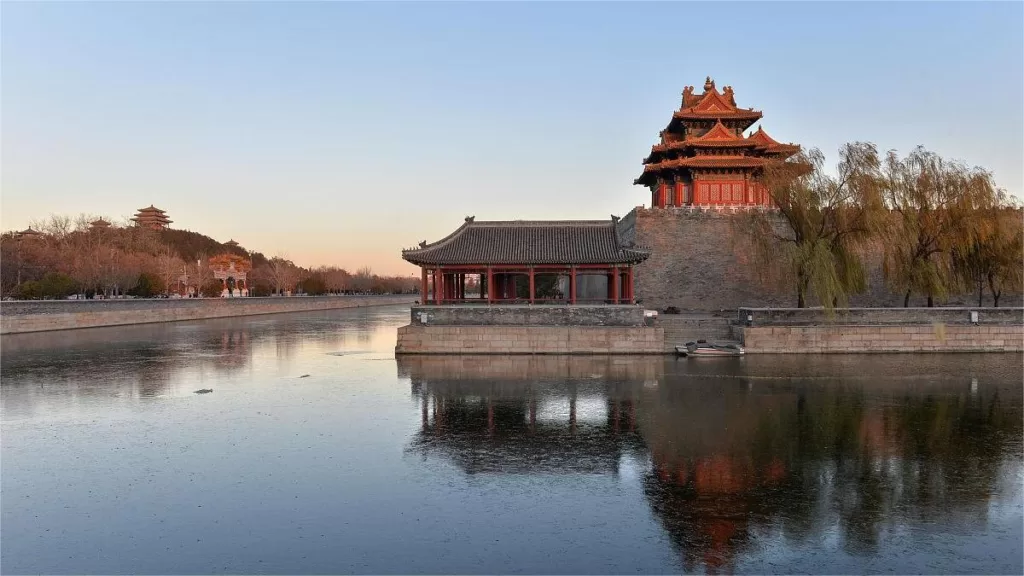The moat surrounding the Forbidden City, known as Jinshui River (金水河), colloquially referred to as Tongzi River (筒子河) or Hucheng River (护城河), plays a pivotal role in both the aesthetics and practicality of this iconic imperial palace. Comprising the Inner Jinshui River (内金水河) and the Outer Jinshui River (外金水河), the waterway weaves through the heart of Beijing, encapsulating centuries of history and functionality.
The Outer Jinshui River, stretching 500 meters in length with a width of 18 meters and an approximate depth of 5 meters, serves as the prominent boundary around the Forbidden City. On the other hand, the Inner Jinshui River flows in front of the Taihe Gate within the palace complex.
The name “Jinshui,” where “金” (jin) translates to gold, signifies the origin of the river. In ancient times, the Chinese integrated the five elements (wood, fire, water, metal, and earth) with the five cardinal directions, associating “金” (jin) with the west. Therefore, Jinshui refers to the water flowing in from the west, namely waters of Yujing Mountain in the western suburbs of Beijing.
The multifaceted roles of the Jinshui River are integral to the Forbidden City’s design and functionality. Firstly, it serves an aesthetic purpose, enhancing the overall beauty of the imperial palace in alignment with traditional Feng Shui principles. Secondly, and perhaps more crucially, it functions as a strategic tool for firefighting. Considering that the structures within the Forbidden City are predominantly made of wood, the availability of water from the Jinshui River provides a local and immediate source to combat any potential fire emergencies.
Moreover, the river fulfills a vital role in drainage and water disposal. The topography of the Forbidden City is not uniform; it slopes from north to south. This deliberate design ensures that in the event of heavy rainfall, water accumulates at higher elevations and naturally flows towards lower areas. The excess water then channels into underground conduits, ultimately draining into the Jinshui River and exiting the palace grounds. This intelligent drainage system has safeguarded the Forbidden City from water damage for centuries, showcasing the foresight and engineering brilliance of its creators.
In essence, the Jinshui River is not merely a picturesque feature surrounding the Forbidden City; it is a living testament to the ingenuity of ancient Chinese urban planning. Its origins, flowing from the western mountains, its symbolic significance, and its practical functions all contribute to the rich tapestry of history woven into the fabric of this imperial masterpiece. As the waters of Jinshui continue to ripple through time, they carry with them the stories of emperors, architects, and the resilience of a cultural treasure.

